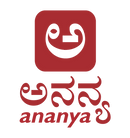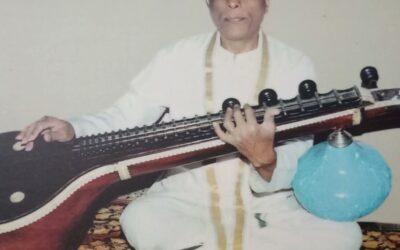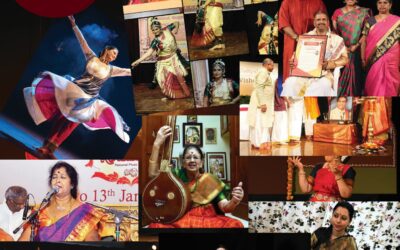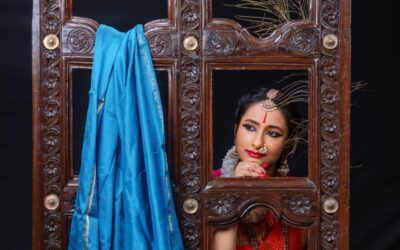The Making of NAMYACHI JANI
–Janani Murali
NAMYACHI JANI is an emotional journey through the life of Janabai, a saint poet of the Varkari tradition. Subtle and powerful in its execution, Namyachi Jani brings together Hindustani music and Bharatanatyam, two distinct techniques of expression. While they seamlessly weave in and out of each other, the audience is only aware of the essence of the story. In that lies the success of two established artistes Navia Natarajan and Jhanavi Phansalkar. Kalasinchana spoke to them on the journey that consumed them and eventually the audience that they shared it with.
What was the seed that gave rise to this collaboration?
Jhanavi: This idea was an extension of my earlier project ‘Abhang in Dhrupad’. I had composed many ‘abhangs’ (devotional hymns written by Marathi saint-poets) in Dhrupad style, which I had presented with one of my collaborators Dhani Gundecha at the Bangalore International Centre in Nov. 2021. As I studied the texts written by the Varkari saints of Maharashtra, I came across the world of Sant Janabai, which immediately caught my attention. Her story of strength and courage, her unflinching devotion to Vitthala and her free spirit inspired me to focus only on her life and teachings. This gave me the idea that the project could expand beyond the framework of a traditional Dhrupad concert. Luckily, I was introduced to Navia Natarajan by a common friend, Chinthu Param. This is where the idea took off.
Navia: As Janhavi mentioned, it was our common friend Chintu Param who brought us together. I recall the very first conversation she and I had over the phone in April 2022. At that moment, when I heard about her intent, I realised that Janhavi was very passionate about the subject and that she was steeped in the essence and philosophy of Jana Bai. The more interactions we had, I was drawn closer to the subject and then the rest is history.
The nuances of Bhakthi can be different for different cultures. What were the points of entry for each of you into Janabai’s world?
Jhanavi: Janabai’s abhangs reflect a wide spectrum of spiritual relationships between the lord and the devotee. There is the tender heart of the bhakta for whom the Lord is everything. But at the same time, one also finds the steadfastness of the yogi, the razor-sharp reasoning of the Gyani and the determination of the karma-yogi. It appeared to me that she is like a vast ocean, from which every spiritual seeker can draw something that he or she is looking for. This primarily attracted me to Janabai.
Navia – The essence of her unflinching devotion, the simplicity of her profound philosophy that is so accessible to all and sundry and the relevance of her teachings spoke to me directly at a time when I was questioning a lot of things. My convictions and beliefs were shaken; be it the essence of faith, surrender or patience, they had all collapsed. I was trying to regain my strength, courage and trust; to stay rooted. That is when this project fell into my lap, almost like a divine intervention. Jani’s story, through her steadfast and implicit faith in the divine and in herself, taught me some important lessons – to believe in oneself; to let go of things that don’t serve any purpose in one’s growth and to surrender to the process. Hence, in a nutshell, more than the intent I had with regard to this work, the production had an intent for me.
How did you choose the abhangs and string the story together?
Jhanavi: We tried to include an abhang that reflects each of the four bhavas described above. We would discuss each of the abhangs that I would come across as I studied her ‘gatha’. Our object was to touch upon the various milestones in the life of a spiritual seeker, right from the initial inquiry into the nature of spirituality, to the point of enlightenment, and how this is reflected in the saint’s life and teachings.
What were the challenging AND exciting parts of bringing together Bharatanatyam and Hindustani music?
Jhanavi: I had initially thought that there would be challenges. But as we worked, and the more we were pulled into the subject-matter of our presentation, the smoother was our collaboration. Navia would show me how she plans to choreograph a given piece and suggest the number of times each line should be repeated. This was very helpful, as it helped me determine the rhythmic and melodic cues which the musicians could memorise for the recital. It all worked out quite naturally.
Navia: Initially, I did wonder how the merger would happen; how would one layer the production in a manner that would be seamless. However, as we began to speak and discuss, the philosophy of Jani took precedence over everything else and our focus was more about doing justice to her philosophy versus our individual artistry.
Does the vocabulary of Bharatanatyam experience a change or evolution when placed in environments such as this work? If so, how?
Navia: Bharatanatyam dancers who saw the performance told me that they were thrilled to see the coming together of two genres. They did not see or differentiate between the two. They saw it as a whole, without any biases and only saw the unfolding of the narrative. This was interesting feedback that I got, because at no point did I feel [that’s while choreographing the pieces] the burden of trying to fit Bharatanatyam into Dhrupad style of rendition. On the contrary, I experienced a sense of freedom, to let movements and emotions flow with the essence and theme.
What is significantly different between ‘accompanying’ Bharatanatyam and ‘collaborating’ with Bharatanatyam for a musician?
Jhanavi: Well, this was my first time with any dance-form, for that matter. However, what I observed was this: all these years, Dhrupad has been regarded as an ‘inward’ art, which compels you to deeply meditate on sound and thus withdraw from the outside world as much as possible. Here, I attempted to weave it into a story that was vividly unfolding before my eyes. This was a whole new experience for me. What I realised was, that the visuals enhanced the richness and the aesthetics of the Dhrupad compositions. For instance, when you come across a story, where Vitthala, Jani’s lord, rushed to help the little orphaned child to help her take a bath, you have a mental picture of the incident and you set the tune according to that picture. But when the story is enacted, the visuals reveal the several, intricate details of the actual act of bathing a little child. That has a powerful impact on the emotive quality of the composition. In this way, this project taught me how ‘bhaav’ and ‘rasa’ can be deepened and enriched even in a context that is very different from the one to which you are used to. Also, it also taught me how nritya and sahitya enhance the beauty of the swara.
This work has reached out to audiences that were knowledgeable about the classical arts as well as those that weren’t. Is it reflective of a shift on artiste choices and audience engagement?!

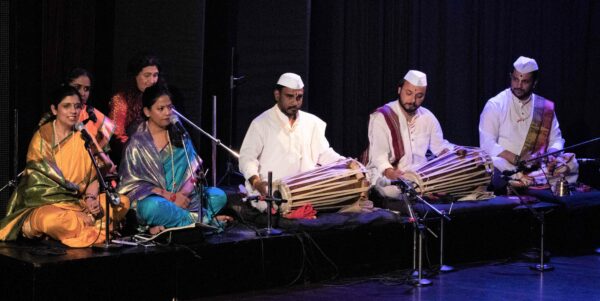
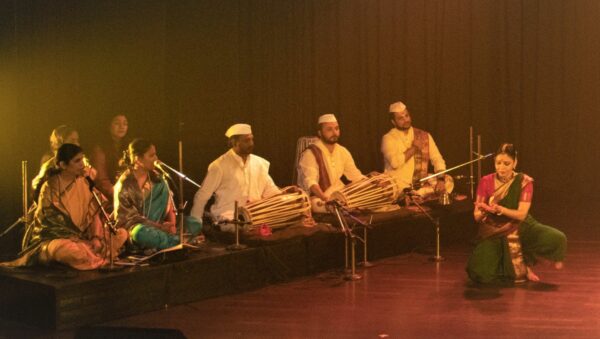
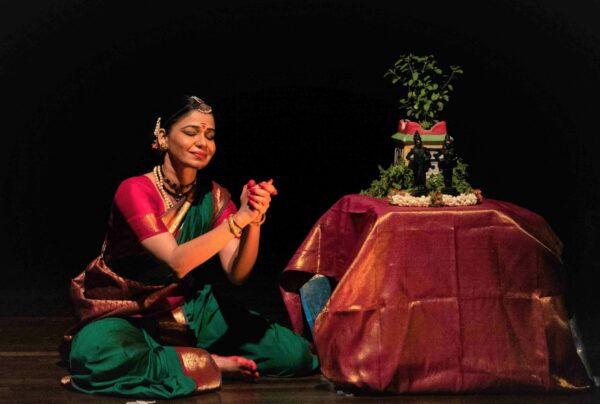
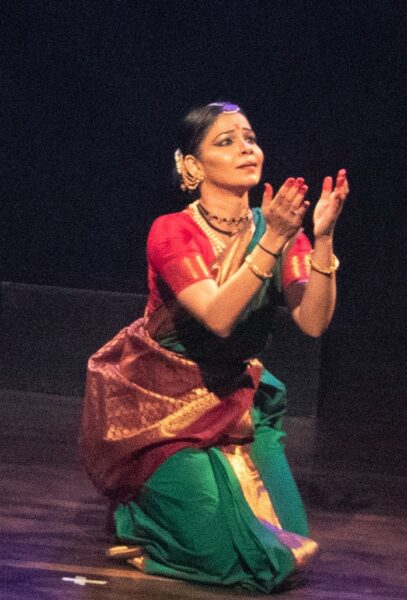

**********
